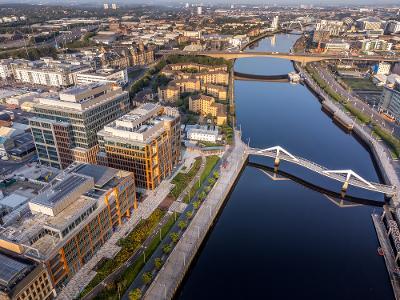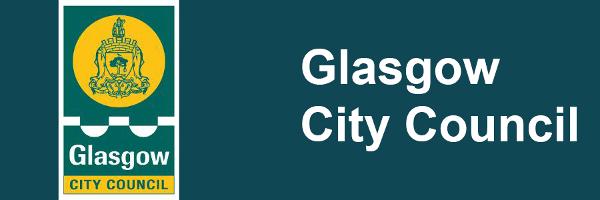New route map plots path to Net Zero.
A new scientific analysis of Glasgow's plans to tackle climate change will help to plot a path to Net Zero carbon emissions.

Glasgow declared a climate emergency in 2019 and set a target of achieving net-zero carbon emissions by 2030. A broad ranging climate action plan was developed in response to the 2019 declaration and detailed work has been undertaken to understand the scale of the challenge posed by a significant reduction in carbon emissions.
Early estimates indicated the transition to net zero would require a £40billion investment package for crucial projects such as local heating projects, electric vehicle charging infrastructure and renewable energy schemes.
Based on a scientific analysis of all the policies, projects and initiatives currently in place in Glasgow, The Net Zero Route Map shows a projected 60% reduction in carbon emissions by 2030 if backed by £23.5 billion of investment. But the Route Map also plots a course for an accelerated reduction in carbon emissions that will achieve an 80% reduction in carbon emissions by 2030 with support of investment worth £36.8 billion.
This accelerated approach would involve a significant shift to electric vehicles, electrification of freight vehicles, GlasgowCC leading on the development and delivery of heat networks and also a substantial rise in the use of heat pumps. Glasgow is currently developing a Green Investment Team that can unlock the private sector funds crucial for financing the large-scale interventions needed to decarbonise the city.
Councillor Angus Millar, City Convener for Climate, welcomed the clarity the Net Zero Route Map has brought to Glasgow's effort to decarbonise and tackle the climate emergency.
Councillor Miller said: ""Since the 2019 climate emergency declaration, Glasgow has made significant progress in our journey towards net zero. We now have increasingly detailed plans to reduce carbon emissions, mitigate against the effects of climate change and better understand how we secure the funding the city needs to achieve its goals.
"The new Net Zero Route Map provides robust evidence for the impact of our actions, and shows us what more needs to be done to make Glasgow a net zero city. It illustrates the requirement for significant carbon sequestration through tree planting and similar activity in order to reach net zero, and we will continue to explore options to deliver this at scale and best monitor its impact on our city's net emissions.
"It also confirms very clearly that private sector investment is needed and demonstrates the wide scope for green investment that exists in Glasgow. Our heating and energy strategy, for example, shows two-thirds of Glasgow could be connected to a district heating network that draws sustainable heat from River Clyde and other sources. This is exactly the kind of opportunity that will attract investors and reduce our carbon emissions.
"However, with the route map showing the gap between our current projected carbon reduction and what could be achieved with an accelerated programme of change, further funding from national government to spur the transition on would clearly help Glasgow reach net zero faster. Glasgow will continue to work with partners from across the public and private sector to realise the many opportunities the city has in creating a lower carbon, more sustainable future."
The analysis undertaken as part of the development of the Net Zero Route Map considered different emissions categories where progress must be made. These include private transport, freight transport, non-residential heat, residential heat, energy and carbon removal and sequestration.
The limited amounts of land in the city provides a small opportunity to sequester carbon through tree planting, but that would still leave an emission gap before net zero would be achieved. It is estimated that trees planted over 40,000 hectares of land would be required to bridge this emissions gap. Tree planting programmes are in place in Glasgow and across the Glasgow City Region as a whole, but it is recognised that a national approach to sequestration that links with landowners and other local authorities may be required.
Glasgow's work to provide scientific rigour to the city's Climate Plan has been supported by a specialist software platform, Climate View OS, which helps to process the complex data produced by the unfolding challenge of climate change. ClimateView has been adopted by the Scottish Climate Intelligence Service, which is funded by the Scottish Government and all 32 Scottish local authorities, to provide technical support when developing approaches to Net Zero.
Einar Bodström, CEO & Co-founder, ClimateView, said: "Our work supports the critical goal of enhancing transparency and consistency of data across Scotland, ensuring that decisions are informed by robust, science-based insights. This initiative exemplifies the national momentum toward data-informed climate action, helping cities like Glasgow confidently map out their journey to net zero while fostering shared learnings across the region."
Further details of Net Zero Route Map can be found in a paper to be presented at the Net Zero and Climate Progress Monitoring City Policy Committee, which available through this link.




